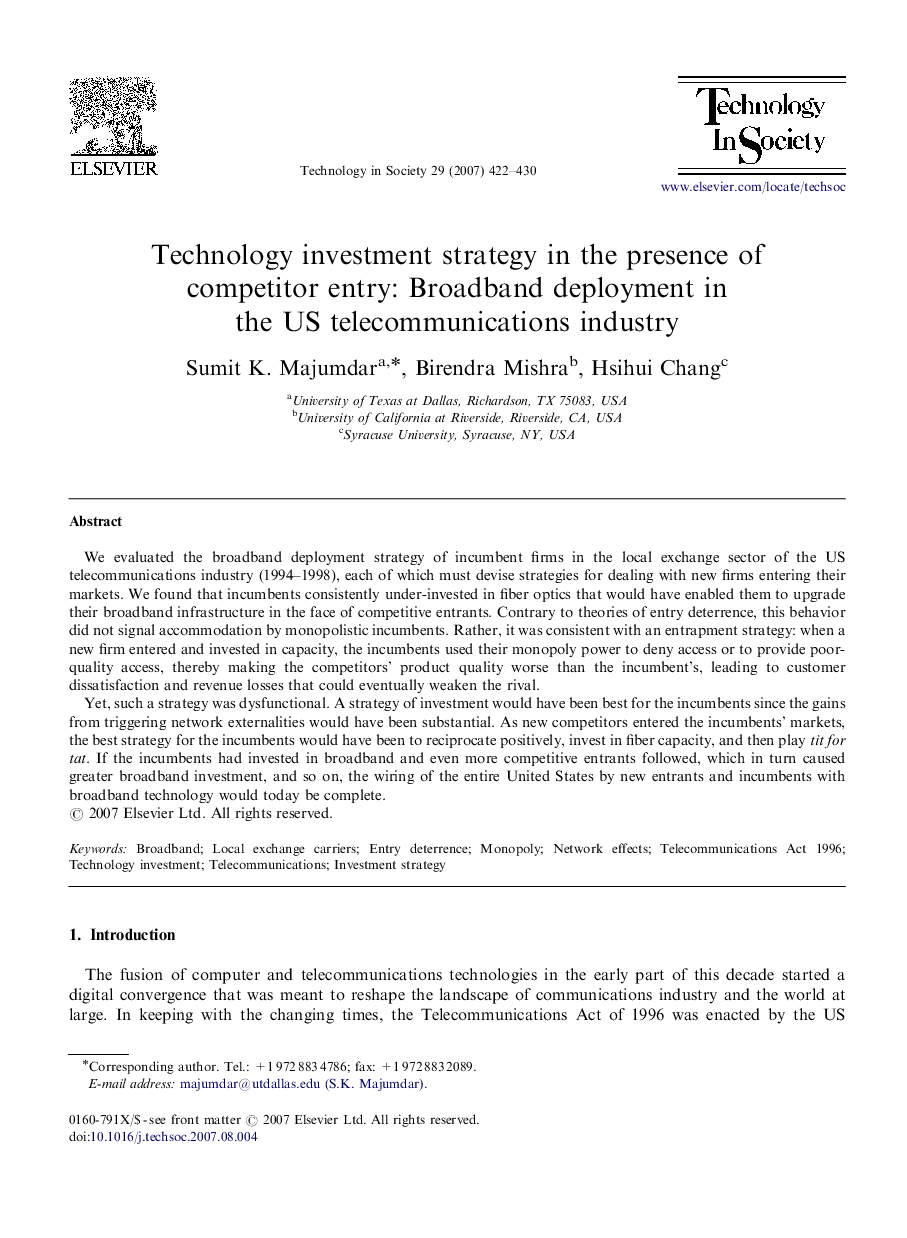| کد مقاله | کد نشریه | سال انتشار | مقاله انگلیسی | نسخه تمام متن |
|---|---|---|---|---|
| 375346 | 622689 | 2007 | 9 صفحه PDF | دانلود رایگان |

We evaluated the broadband deployment strategy of incumbent firms in the local exchange sector of the US telecommunications industry (1994–1998), each of which must devise strategies for dealing with new firms entering their markets. We found that incumbents consistently under-invested in fiber optics that would have enabled them to upgrade their broadband infrastructure in the face of competitive entrants. Contrary to theories of entry deterrence, this behavior did not signal accommodation by monopolistic incumbents. Rather, it was consistent with an entrapment strategy: when a new firm entered and invested in capacity, the incumbents used their monopoly power to deny access or to provide poor-quality access, thereby making the competitors’ product quality worse than the incumbent's, leading to customer dissatisfaction and revenue losses that could eventually weaken the rival.Yet, such a strategy was dysfunctional. A strategy of investment would have been best for the incumbents since the gains from triggering network externalities would have been substantial. As new competitors entered the incumbents’ markets, the best strategy for the incumbents would have been to reciprocate positively, invest in fiber capacity, and then play tit for tat. If the incumbents had invested in broadband and even more competitive entrants followed, which in turn caused greater broadband investment, and so on, the wiring of the entire United States by new entrants and incumbents with broadband technology would today be complete.
Journal: Technology in Society - Volume 29, Issue 4, November 2007, Pages 422–430